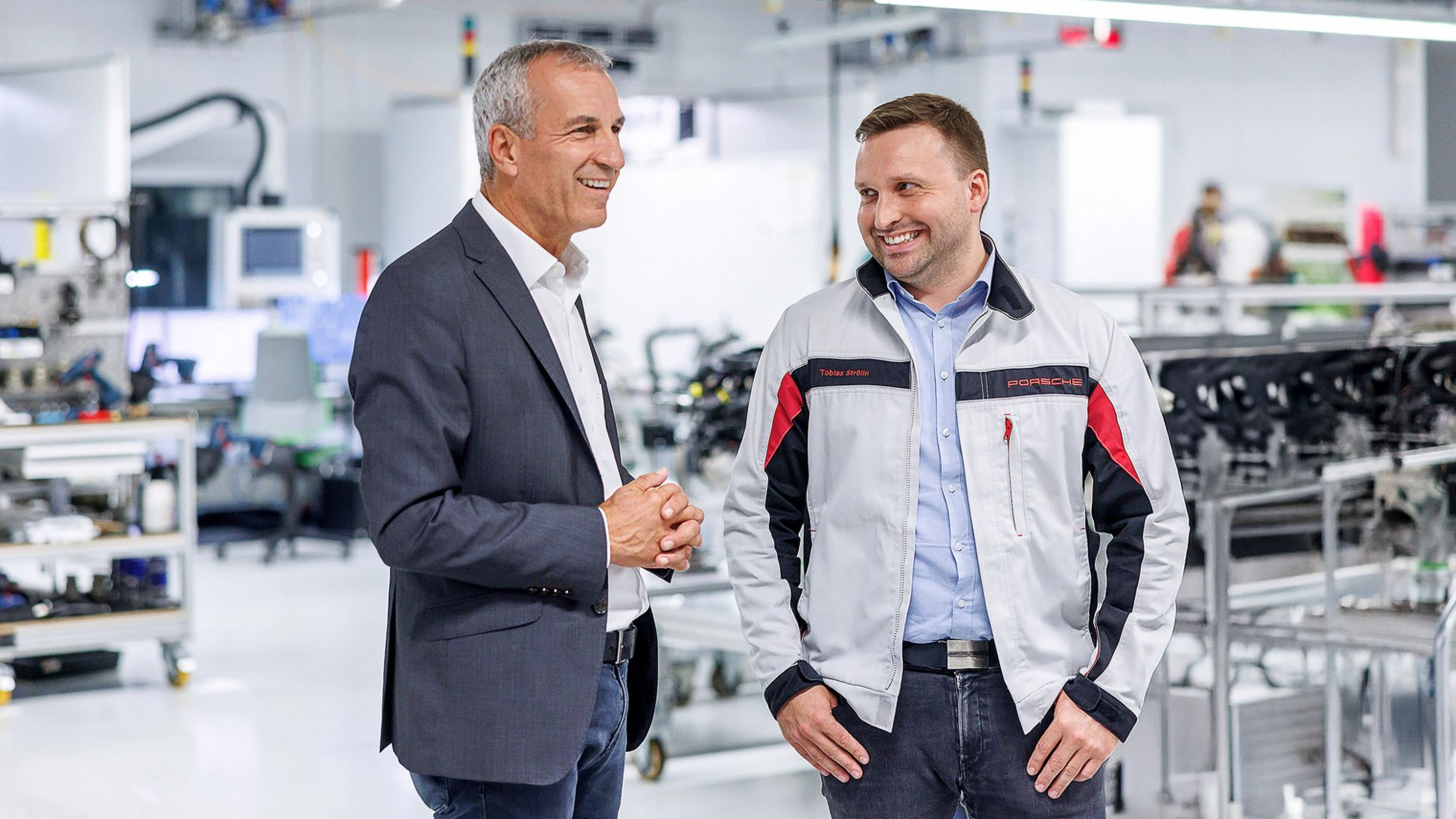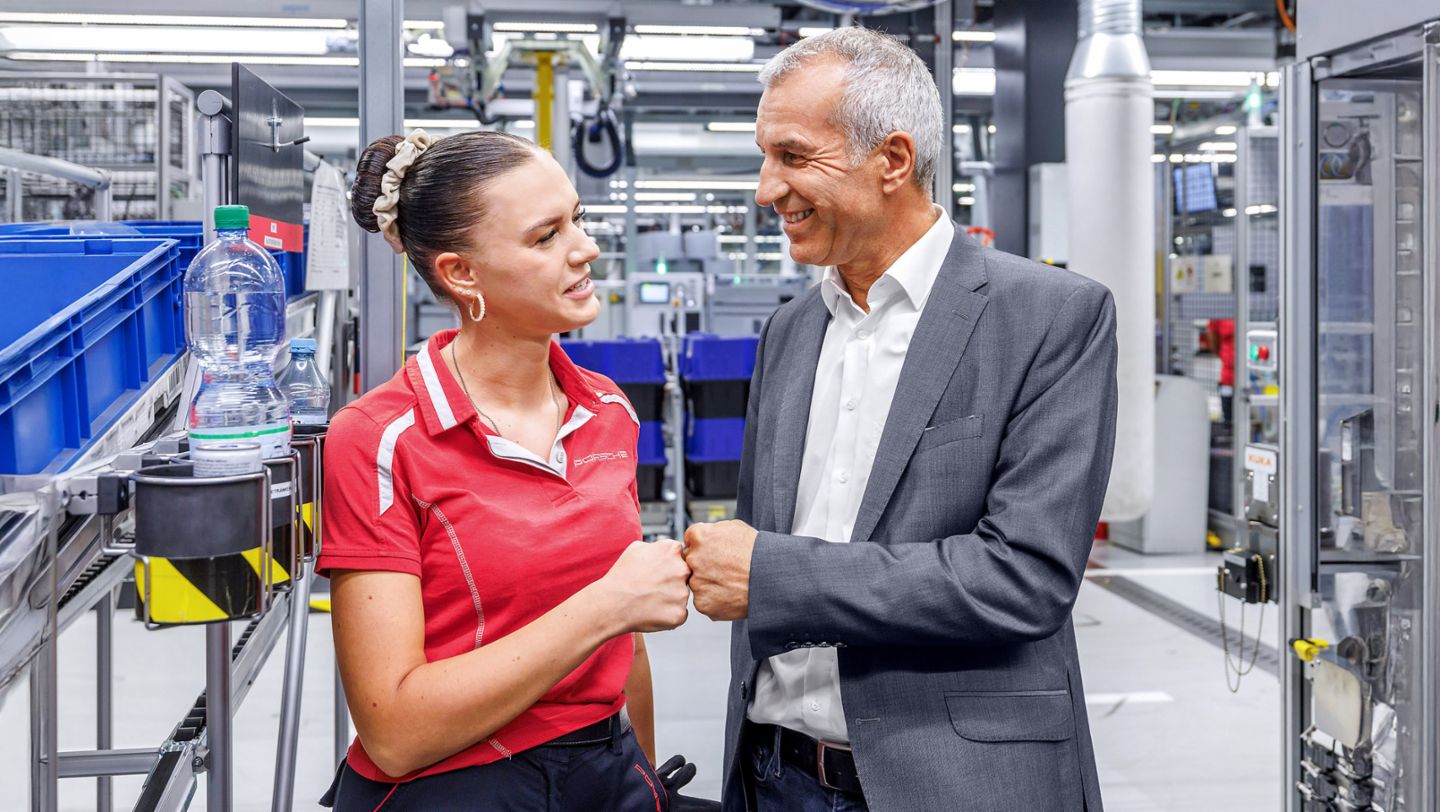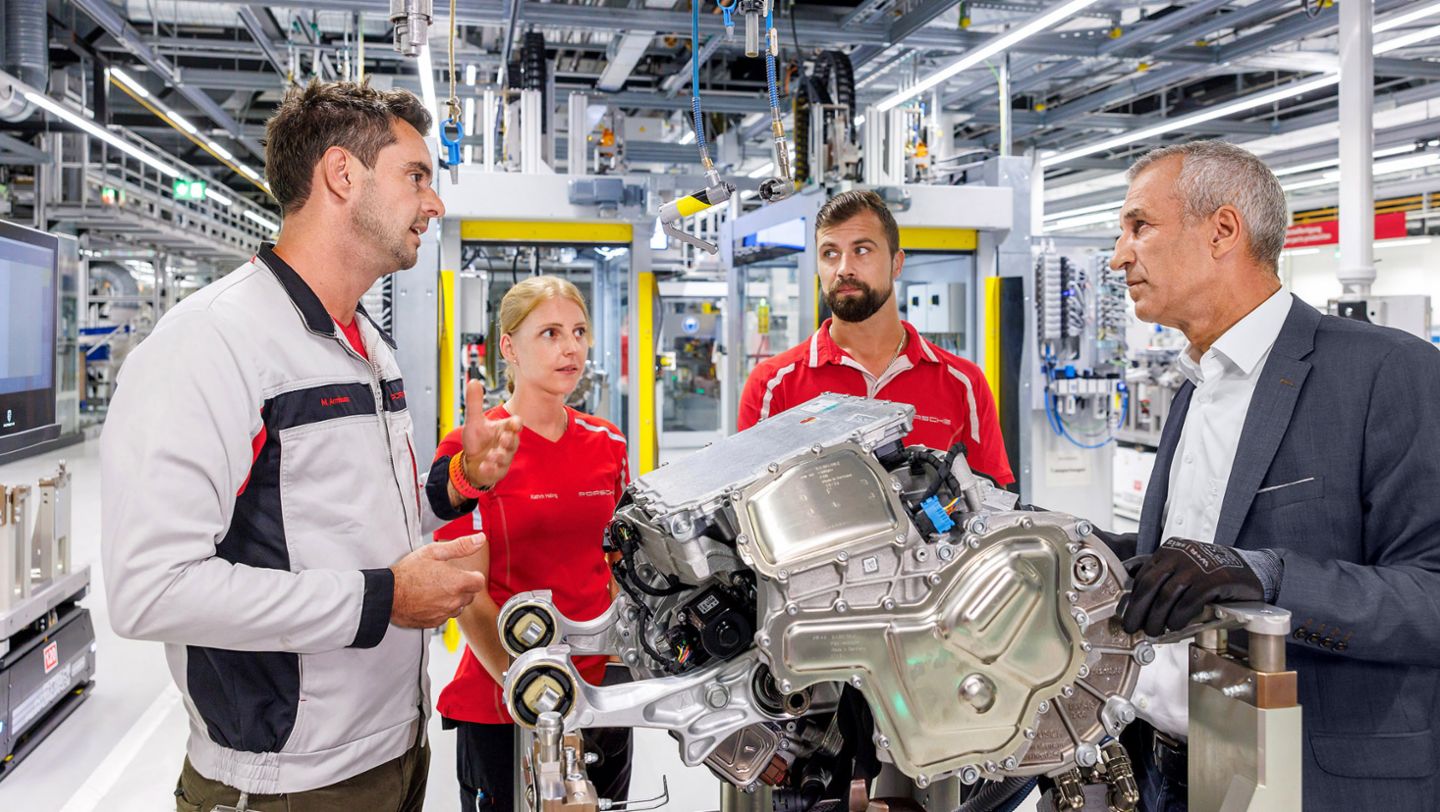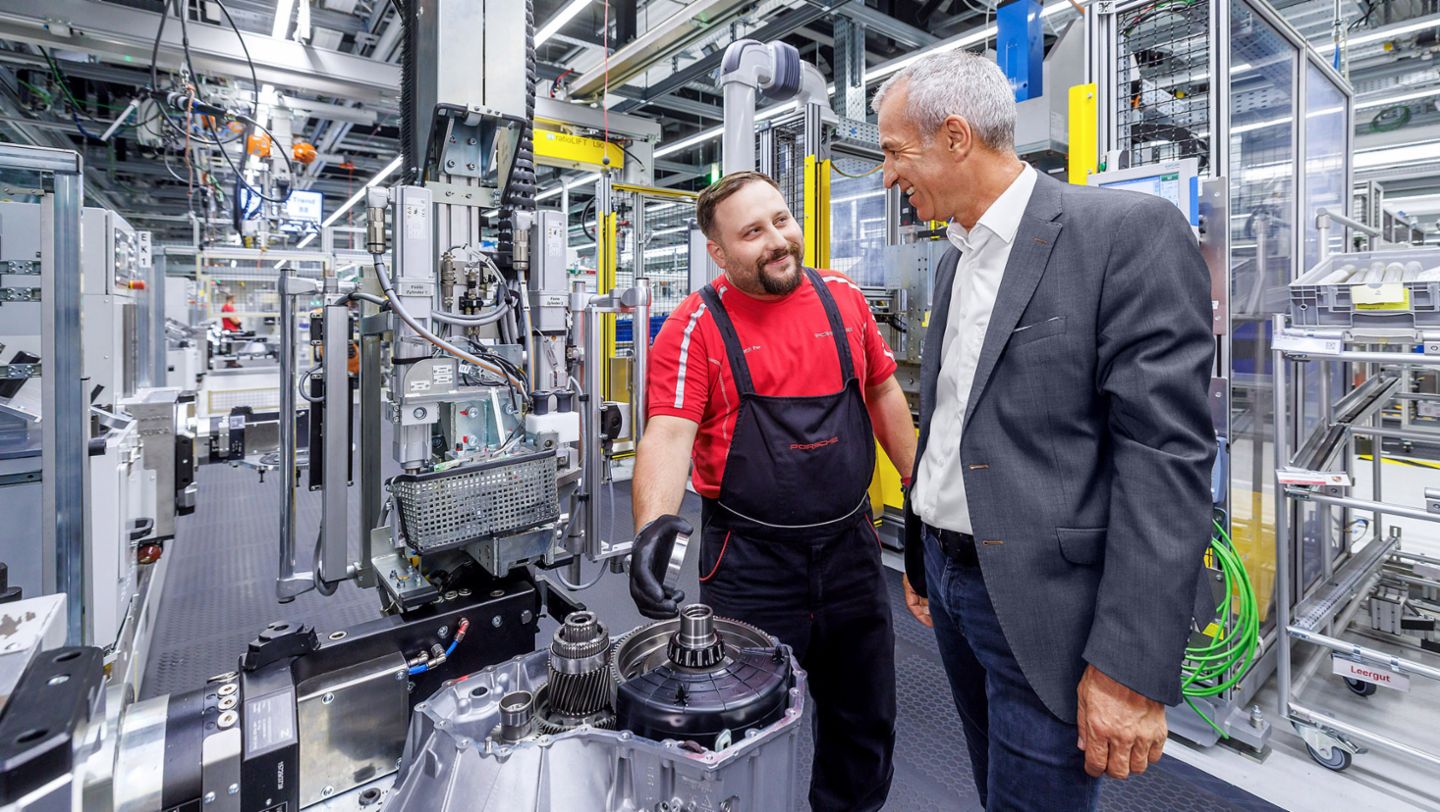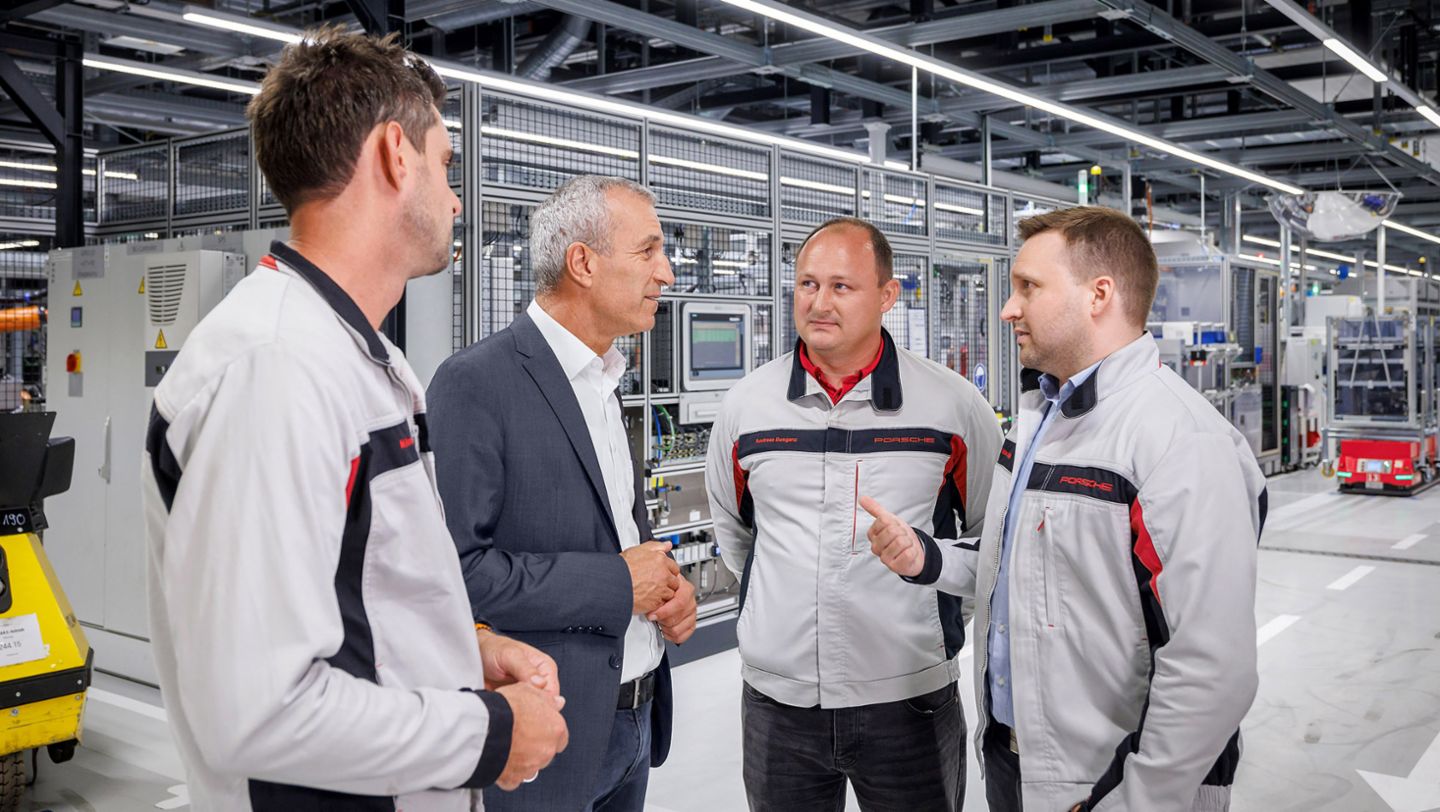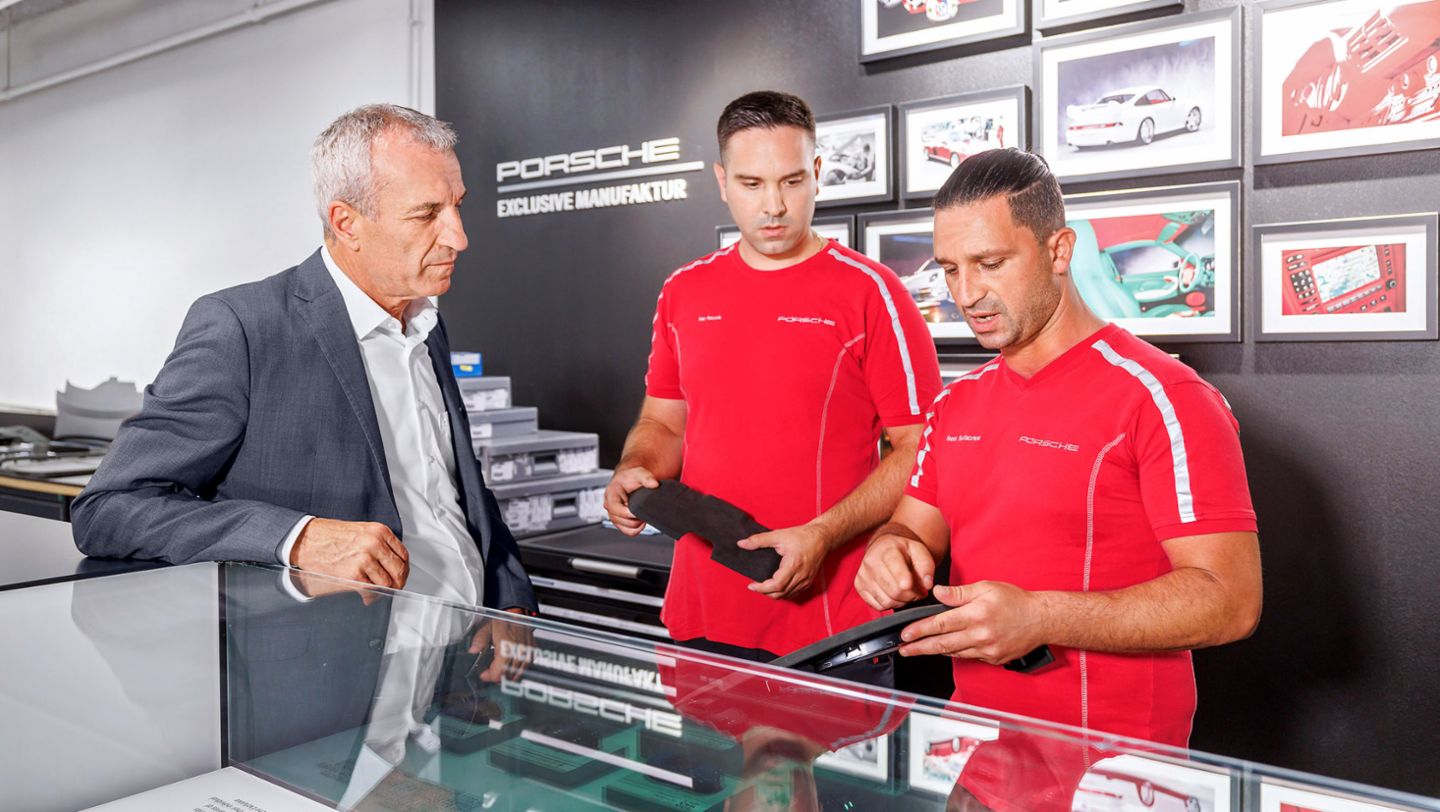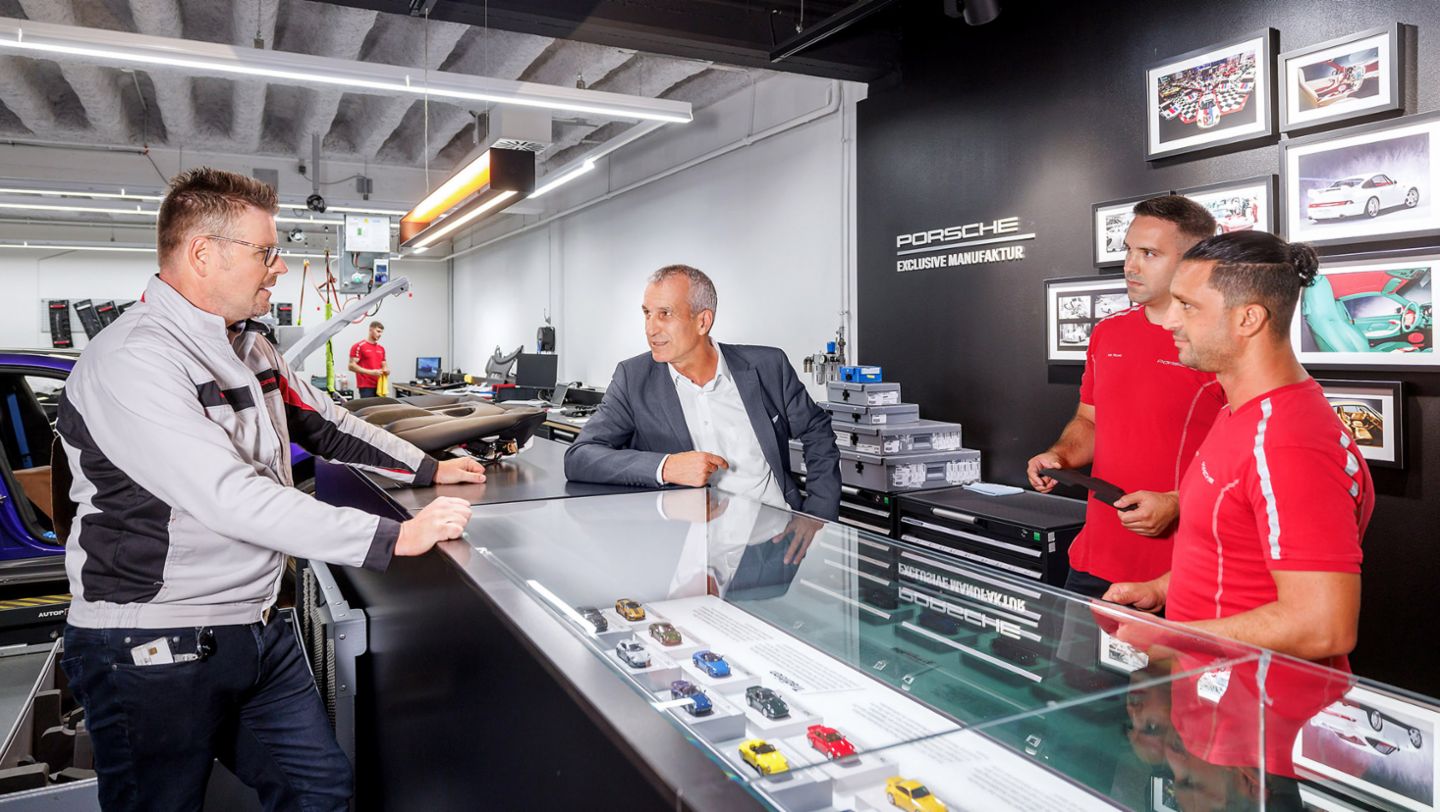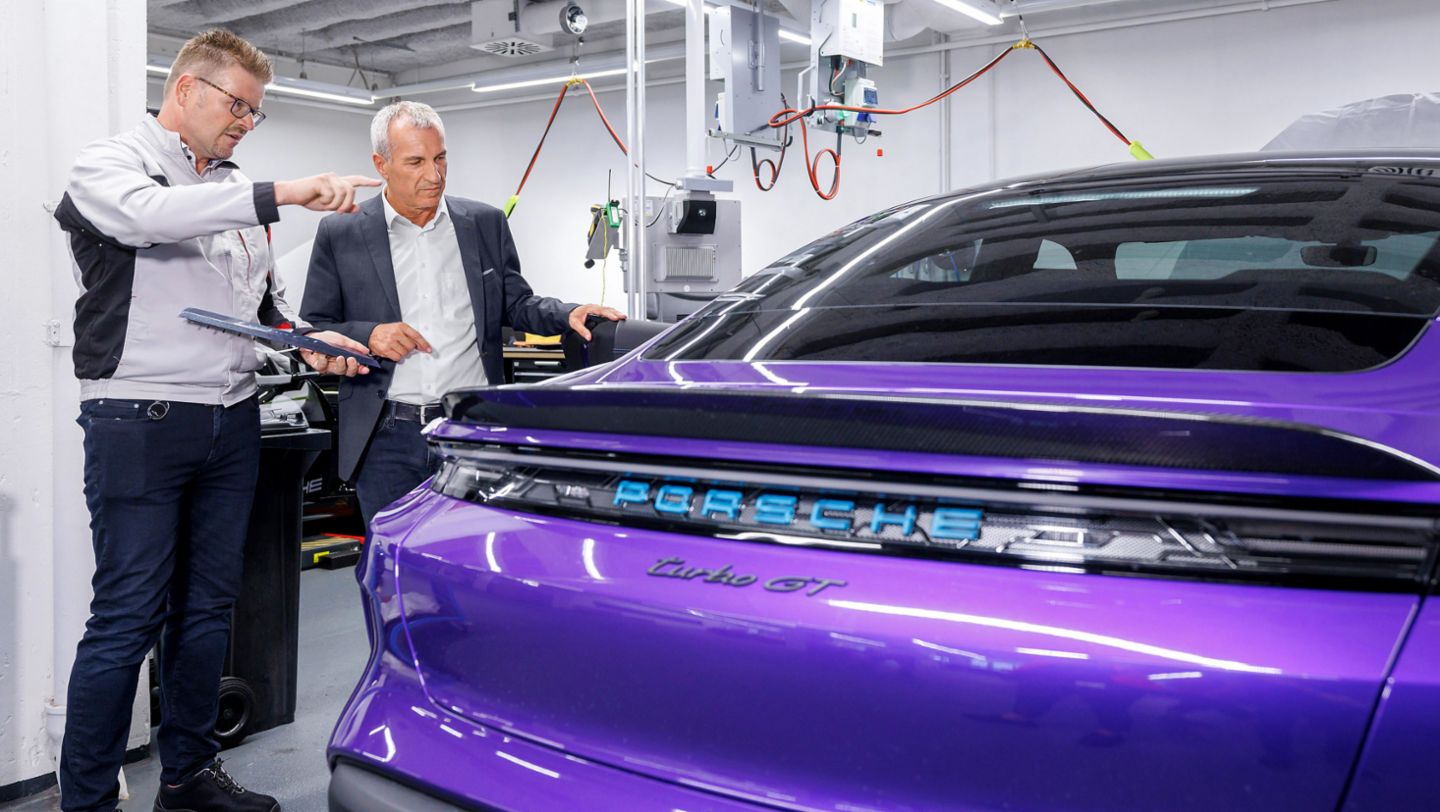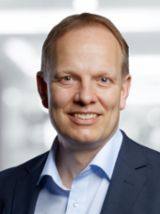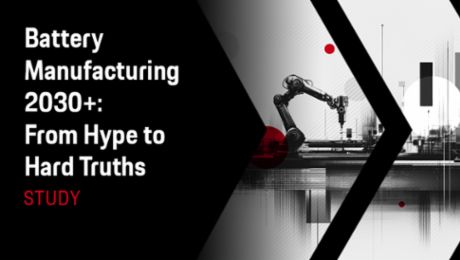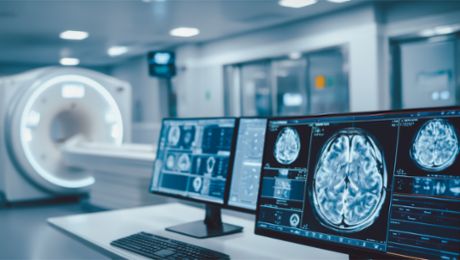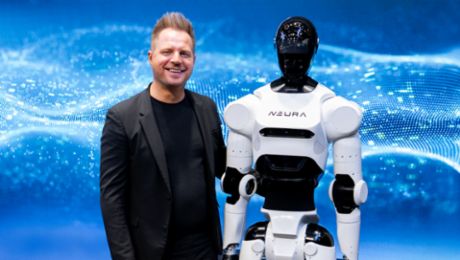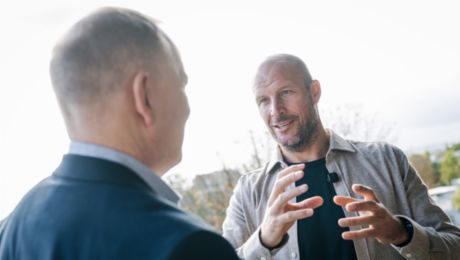It had to have been around 1965. In the town of Öhringen in southwestern Germany, four-year-old Albrecht was sitting in a barbershop, afraid of the scissors. But his father alleviated his anxiety with an enticing prospect: After braving the haircut he would be rewarded with a small model car. The stationery store right next door had a glass cabinet with dream cars at a scale of 1:60. “That’s how I acquired my first Porsche 911 at an early age,” remarks Reimold.

Today he works in Stuttgart-Zuffenhausen and builds dream cars himself. At a scale of 1:1. Reimold is the Member of the Executive Board for Production and Logistics at Porsche AG. Guests to his office in the middle of the site can take an extraordinary trip back through his professional life. Many of his projects are commemorated by suitable model cars, which are carefully stored and displayed on the shelves. The stories behind these cars are told by the passionate collector himself.

Reimold points to a photo of his yellow 911 Targa. This sports car was his 60ᵗʰ birthday present to himself. It combines the traditional genes of Porsche with the feats of cutting-edge technology. The front hood is a work of art. Reimold had two longitudinal black stripes featuring an outsized rendering of his fingerprint added to the paint job. For the Porsche paint shop that’s nothing special anymore. It’s standard practice made possible by digital printing techniques. “Anyone can order personalized extras like this from us,” notes Reimold. Porsche’s customers, after all, love individualization.
A passion for sustainability
Before elaborating on special extra features, Reimold turns his full attention to the underlying resources. Along with fellow board member Barbara Frenkel (Purchasing), he is Porsche’s principal sponsor of sustainability. His devotion to the topic was evident immediately upon arrival at Porsche in Stuttgart-Zuffenhausen from Volkswagen Slovakia in Bratislava in February 2016. “The first thing I did was shift our electrical power supply to renewable sources. That,” he adds, “was an obvious step.” As he explains, “You don’t need any regulations to take initiatives like that. It starts with the right inner attitude.” This outlook should help Porsche reduce CO₂ emissions successively throughout the value chain for its cars. “Sustainability is an integral part of the Porsche brand and of our company strategy,” says Reimold, who considers all of Porsche’s employees active contributors to the process.

How to mobilize an entire workforce for a common cause? “Motivation, further training, and continuous dialogue are how we reach our goals,” says Reimold. “With an unswerving focus on quality and efficiency in production.” However, internal factors alone are not enough, because 80 percent of the cars’ components come from suppliers. “We take all the suppliers on board just like we do with our own teams,” says the board member. “We don’t differentiate in that respect. Our shared goal is to make our customers’ dreams come true. Craftsmanship, coupled with industrial thinking and superior technology—that is what Porsche is known for.”

Successful examples of that approach include the four production projects that the Stuttgart-based sports-car manufacturer started in 2024 alone. “Our team put in a superb performance with the launch of the new Panamera and Macan and the updated Taycan and 911,” says Reimold with evident approval. He highlights the role of collaboration above and beyond all departmental boundaries. Another key factor consists of clear milestone planning by the launch management teams—from installing equipment and starting operations to ramping up production. That would not be possible without committed personnel. “You have to be utterly devoted to success,” says Reimold.
You don’t have to know everything yourself
Reimold also places a premium on the continuous exchange of expertise, ideally across generations. He therefore regularly invites production employees to spend three months directly observing what he does. “This lets me get to know talented individuals, and gives them a chance to see what a board member actually does all day,” he says. “I can learn a lot from talking with young people in particular. That’s especially true for future-oriented topics like artificial intelligence and digitalization.”
That outlook goes in line with one of the production head’s maxims: You don’t have to know everything yourself but you do have to know where to get that knowledge. “I’ve followed this principle throughout my professional stations at Audi, Volkswagen, and Lamborghini. For me, strong teamwork consists of complementing each others’ skills and abilities while bringing different character strengths to bear in the best ways.” Reimold praises the Porsche spirit as a driving force here. “We always want to lead the way,” he says. This ambition can’t be taken for granted. It depends above all on “a constant readiness for change.”
Anyone who seeks to excite as many people as possible about the future will need to draw on inspiration. In fact, there can never be enough of it. Here, too, Reimold highlights the role of the entire team. “We have our own innovation task force. Anyone with a good idea can present it to the committee. If the idea is sufficiently promising, they’ll get enough funding to test it. After three or four months we look at the project together to see what it has yielded. This method has enabled us to bring at least 30 innovations a year into series production. And it has fostered a real culture among our employees. Together, they want to help Porsche advance.”

Zuffenhausen plant: the heart of Porsche
At the Zuffenhausen production site in the north of Baden-Württemberg’s capital city Stuttgart in southern Germany, the Porsche legend was born. In 1950 the first Porsche 356s were built there—after the original model was made in Austria. The team led by Ferry Porsche, the son of the company founder, had initially planned for a series of 500 cars. By the time production stopped in 1965, however, some 78,500 Porsche 356s had rolled from the line.
The 550 had joined the product range back in 1953. And a new legend was born in 1963 with the first 911. As demand rose around the world, multiple extensions to the factory were needed over time. With creative solutions and intelligent use of space, Porsche managed to continuously expand its sports-car production despite the limited amount of space—using multi-story production halls and sky bridges between streets to allow for long production lines.
Series production of the Porsche Taycan, the company’s first all-electric sports car, brought Spyder major changes to the iconic site in 2019. In parallel to the existing sports-car production facilities, a “factory in a factory” arose—cutting edge, networked, and with innovative production technology such as driverless transport systems and a central factory cloud.
Today, Porsche’s headquarters in northern Stuttgart comprises six plants, the company’s own training center, the Porsche Museum, and much more. The Zuffenhausen site makes cars for the 911 and Taycan series. In an area of around one square kilometer, it also contains three specialty workshops: the Sonderwunsch (special request) Manufaktur for highly individualized customer vehicles, the Sonderwunsch Program for unique creations that can take years to build, and a carbon-fiber workshop where components for lightweight 911 models are assembled by hand outside the regular sports-car production line.
Plugging holes─with pads from Tesa
Some of these innovations might seem trivial to outsiders at first glance. Yet as is well known, even seemingly minor changes can have long-lasting effects. Reimold is ready with one of his favorite examples. It comes from the Porsche paint shop. To seal a car body, workers used to have to close the many small openings needed in its underbody with plastic plugs, by hand, while standing under the vehicle and reaching up. “The ergometrics were tiring, complicated, and really bothersome for our people,” recalls Reimold. But someone in the paint shop came up with a better solution. Instead of plugging the holes, they could patch them with stable pads, dispensed from a roll. Just like the way price stickers are applied to products in a supermarket.

A subsidiary of Hamburg’s Beiersdorf Group was quickly identified as a partner, namely Tesa, a specialist in adhesive films with decades of experience in both household products and industrial projects. Following joint deliberations, the team developed adhesive pads as a fully fledged replacement for the synthetic plugs: one millimeter thick, absolutely leakproof, tough, and durable. The team also developed an automated application system. “Instead of us doing this strenuous and troublesome job by hand, a robot now patches the holes in the underbody,” says Reimold. Right on the mark. He is also pleased that this approach to corrosion resistance has taken root at other paint shops in the Volkswagen Group—“because it’s simply a superb idea.”
Like so many innovations from Porsche, this invention could well become standard industry practice in a few years. Instead of using different plugs for differently sized holes in the car body, the new Tesa pads fit all the openings. “Encouraging and promoting innovations is an integral part of Porsche’s strategy, and we also view it in transdisciplinary terms. We pursue it across all divisions and subsidiaries both at home and abroad,” adds Reimold. An agile project team actively scouts for new developments and selects them for testing early on.

The Porsche Leipzig plant: investment in the future
Since starting operations in 2002, the Porsche Leipzig plant, located in Central Germany, has produced more than 2.14 million cars (as of December 2024). The site makes the Panamera and Macan series. Three drive systems—combustion, plug-in hybrid, and all-electric—are built on a single assembly line. The Cayenne also rolled from the line until 2016. In addition, a limited number of Carrera GT sports cars were made in Leipzig from 2003 to 2006. Production has been CO₂-neutral since 2021.
Porsche has turned the Leipzig plant into a center of electromobility expertise. With its decision to produce the second, electric generation of the Macan there, the company invested in a highly modern body shop, on-site integration of the axle assembly, and a new chassis-body marriage system. Paint shop, assembly, and logistics capacities were incorporated into the existing buildings. This enables the site to produce the three different drive systems on the existing production line in highly flexible ways.
With its transformation into a smart factory, the Leipzig plant has also been playing a pioneering role in digitization and automation. That, plus its sustainability efforts, laid the foundation for the site's "Factory of the Year" title in 2023. This honor comes from one of the most prestigious international industry competitions. Camera-based battery monitoring for electric vehicles was integrated into production, as was an automated measurement system for inspecting screw threads. Since 2023, the paint shop has been using an automatic error detection system (AFE) in series production. This smart solution can spot the tiniest irregularities on the car’s outer surface in just 70 seconds.
For an idea to become an innovation, three criteria have to be met: It has to be new and unique, provide demonstrable customer benefit, and bring real added value to the company. Reimold wants to ensure suitable conditions. “Innovations have to be hunted down. For that you need courage and creativity. Creating a conducive climate for this to happen is the job of people in leadership positions.”
Craftsmanship has a future
For all the technological progress, Reimold, who concluded his toolmaking apprenticeship by winning a Germany-wide competition, has never underestimated the value of craftsmanship. It is all the more important for a luxury-car maker like Porsche. “Quality in combination with individuality—that’s what sets us apart. It’s why we train people in interior production and design. They’re the people with the all-important expertise in leather-working and upholstery. Other examples include the company’s car body construction and the paint shop. These too are areas where we need highly skilled employees who are masters at working with different surfaces, including innovative, extremely lightweight carbon-fiber materials.”
Reimold and his colleagues in the Production and Logistics division are also at work on further innovations. Exciting ones. But he declines to reveal them just yet. One thing is certain, however: Future milestones will be marked by additions to his model car collection. “Speaking of model cars,” says Reimold at the end. “My first little 911 from 1965, from the stationery store, has gone missing. I’ve been looking for it for a while now. But someday I’ll find it again!”

Vita Albrecht Reimold: Mit dem Werkzeug fing alles an
Albrecht Reimold was born in May 1961 in the southwestern German town of Öhringen in the state of Baden-Württemberg. His engineering career has encompassed leading positions at major car manufacturers and key contributions to the development of innovative production strategies.
Reimold completed his toolmaking apprenticeship at the Franz Schulz precision component maker in Bretzfeld by winning a national competition. He then studied production technology at the Heilbronn University of Applied Sciences. The newly minted engineer began his career in 1987 at Audi AG in Neckarsulm, initially in a trainee program and then in various technical and management positions. In 1990 he earned a specialized qualification in welding engineering and became an assistant plant manager at Audi before assuming directorship of car body construction for the Audi A8 in 1993.
In 1997, Reimold and Heinrich Timm, who directed the aluminum and lightweight construction center for AUDI AG Neckarsulm, received the prestigious Professor Ferdinand Porsche Award from Vienna’s Technical University for their contributions to developing the Audi Space Frame for large-scale production. In 1998, Reimold became head of the Audi A2 production segment. And in 2002 he guided the start of production for the Lamborghini Gallardo in Sant’Agata Bolognese. In 2003 he took charge of Audi’s production planning for high-end and luxury models as well as the Audi R8, and was appointed director of Audi’s Neckarsulm site in 2009. In 2012 he went to Volkswagen Slovakia in Bratislava as its CEO and board member in charge of technology, where he led the management and development of the multi-brand plant.
In February 2016 Reimold was appointed as a Member of the Executive Board for Production and Logistics at Dr. Ing. h.c. F. Porsche AG in Stuttgart. He has since been guiding strategy and further development of the production processes for one of the world’s most acclaimed automotive brands. Achievements under his leadership include completion of the Taycan plant for Porsche’s first all-electric model at the company’s headquarters in Zuffenhausen.
Info
Text first published in Porsche Consulting Magazine.
